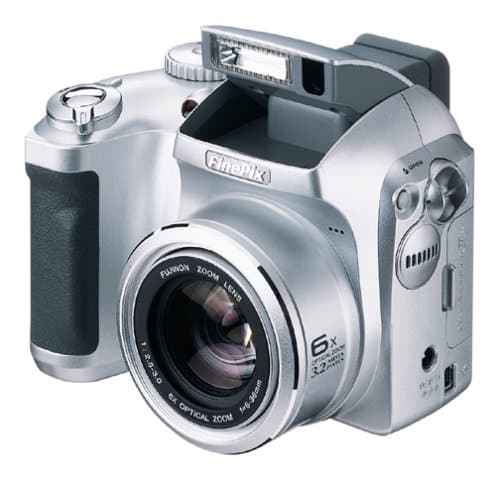
Asus A7V600
Ease of Set Up
Value For Money
Asus A7V600
When you purchase through links on our site, we may earn an affiliate commission. Here's how it works.

User Reviews
Value For Money
Ease of Set Up
Well Laid Out Board And Easy To Install, Good Web
Well laid out board and easy to install, Good web support, Good board at a reasonable price. Pity about the quality, I had two of these boards both of which had catastrophic failures at about 18 months.
Do not recommend Asus A7V600.
Value For Money
Ease of Set Up
The Asus A7v600 Has Proved To Be A Shrewd Investme
The Asus A7V600 has proved to be a shrewd investment, I'm only a hobbiest, not a pro, and this was my first start-to-finish build. On top of that, I'm a 57 year old woman. I feel my research paid off in getting good components, and I am quite pleased with this motherboard. My goal with this build was to be able to transfer videotapes to my computer for editing and preserving on DVD. This motherboard supports all the bells and whistles I need to do that. I'd definitely recommend it, and have.
Value For Money
Ease of Set Up
Whilst The Asus A7v600 Motherboard Supports Two S-
Whilst the Asus A7V600 motherboard supports two S-ATA devices it has been my experience and that of others that attempting to install many of the Linux Distro's i.e Red Hat Suse etc is a total nightmare especially if you are very new and inexperienced with Linux which requires users to build or recompile the older kernels. It is important to remember that Microsoft isn't the only operating system so thought needs to be given to this.
Value For Money
The Reasonably Plain Asus A7v600 Features The Kt60
The reasonably plain ASUS A7V600 features the KT600 chipset and there is no "Deluxe" version of this board to speak of. Although, the A7V600 may seem a little lite on features compared to other ASUS bred boards it still provides the user with all the essential gear such as LAN, Serial ATA and Audio.
ASUS has selected the 3COM 3C940 controller offering Gigabit LAN support and is equipped with a unique net-diagnosing utility called VCT (Virtual Cable Tester). The controller intelligently detects net connection status up to 100 meters from a remote location and reports the distance of bad cable. Of course, the 3COM controller also supports 10/100Mbps as well as the new 1000Mbps transfer rate. The VT8237 Southbridge supports a total of eight USB 2.0 ports, four of which can be found on the I/O panel along with the RJ45 LAN connection. The other four USB 2.0 ports can be installed via external brackets however ASUS supply just one 2-port USB module with the A7V600. Unfortunately ASUS failed to provide any sort of Firewire connectivity with the A7V600 and instead USB seems to be the only connection for peripheral devices.
One feature you can however expect to see on all KT600 motherboards is Serial ATA RAID. This is because the VT8237 chip can support two Serial ATA150 channels in RAID at a bandwidth of 150MB/s per port. VIA's unique SATAlite interface expands support for two additional SATA devices through an optional external Serial ATA PHY chip. Featuring support for RAID 0, RAID 1, and RAID 0+1, the native VIA RAID controller optimizes system performance by ensuring the highest disk data transfer rates and provides the most advanced fault tolerant solution for optimum data integrity. It also comes with a user friendly software configuration program for easy disk array set up in all the latest Microsoft Windows and Linux environments, and supports both Serial ATA and Parallel ATA standards.
For audio support ASUS have gone with the ADI AD1980 SoundMAX 6-channel codec with S/PDIF out interface. The AD1980 is used to add analog and digital audio capabilities to computer motherboards by connecting directly to the core logic chipset. By reusing existing systems resources, this solution adds flexibility, improves sound quality, and lowers the system BOM cost by integrating components. Overall the AD1980 controller is a suitable solution that will satisfy most users.
ASUS have put together a pretty basic package for the A7V600 consisting of a drivers CD, user manual, Serial ATA and Parallel ATA cables, I/O Shield and a bag of extra jumpers. The board design is clean as the lack of integrated components has made this a very spacious design. The processor Socket is clear of any obstructions and there should not be any hassles when installing large heatsinks. Sadly the annoying AGP/DIMM confliction exists. In fact it is quite a problem on the A7V600. The DIMM slot clips are placed right up against the AGP port creating little room for the user to work with. Apart from this one design flaw the rest of the board is great, IDE ports are all easy to access and so to are the Serial ATA ports. Overall ASUS look to have put together a strong contender and at roughly $90 US they have also found the right price tag.
S-ATA does not support Linux i.e, suse without recompiling older kernels. If your a newbee in linux this will prove a nightmare. Whilst Linux will detect a S-ATA HDD many many people have reported major problems installing a Linux OS due to controller problems with hardware raid, me being one of them.
Q&A
There are no questions yet. Be the first to ask a question.